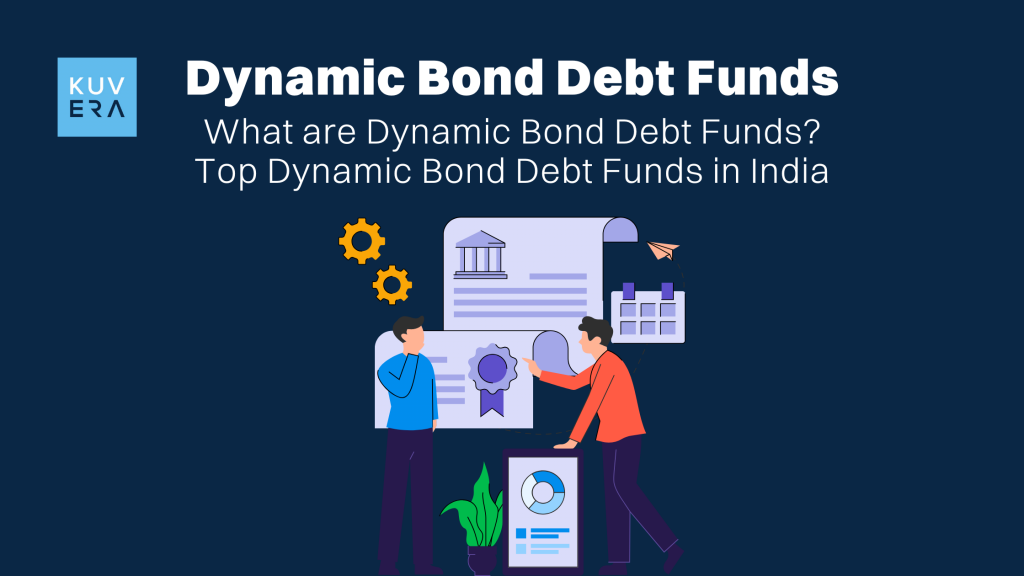Dynamic Bond Funds are the debt mutual fund schemes that possess the flexibility to invest across various durations of debt and money market instruments such as government securities, corporate bonds etc. This adaptability allows fund managers to dynamically adjust the portfolio’s maturity profile in response to evolving interest rate scenarios, aiming to optimise returns for investors.
Features of Dynamic Bond Funds
1. Flexible Duration Management
Fund managers can adjust portfolio duration based on interest rate movements, extending it during falling rates for capital appreciation and shortening it during rising rates to minimise losses.
2. Diverse Investment Spectrum
Investments span government securities, corporate bonds, and money market instruments, ensuring broad exposure across credit qualities and maturities.
3. Active Interest Rate Management
Portfolios are actively managed based on macroeconomic trends, allowing fund managers to optimise returns across different interest rate cycles.
Benefits of Investing in Dynamic Bond Funds
1. Potential for Enhanced Returns
By actively adjusting the portfolio’s duration in response to interest rate movements, Dynamic Bond Funds aim to capitalise on both rising and falling interest rate scenarios, potentially offering superior returns compared to traditional fixed-duration debt funds.
2. Professional Management
Investors benefit from the expertise of seasoned fund managers who analyse economic trends, interest rate forecasts, and market dynamics to make informed investment decisions. This professional oversight can be particularly advantageous for investors who may not have the time or expertise to manage their debt investments actively.
3. Diversification
The broad investment mandate of Dynamic Bond Funds allows for diversification across various debt instruments, issuers, and maturities, which can help mitigate risks associated with specific sectors or credit profiles.
Performance Metrics of Selected Dynamic Bond Funds
To illustrate the performance and characteristics of Dynamic Bond Funds, let’s examine the following schemes:
| Scheme Name | 1 yr | 3 yr | TER |
|---|---|---|---|
| PGIM India Dynamic Bond Growth Direct Plan | 9.45% | 7.63% | 0.35% |
| Baroda BNP Paribas Dynamic Bond Growth Direct Plan | 9.10% | 7.59% | 0.71% |
| ICICI Prudential All Seasons Bond Growth Direct Plan | 9.00% | 8.06% | 0.59% |
| Aditya Birla Sun Life Mutual Dynamic Bond Growth Direct Plan | 8.99% | 8.23% | 0.64% |
| HSBC Dynamic Bond Growth Direct Plan | 8.88% | 7.17% | 0.18% |
Source: Kuvera, March 19, 2025
Sectoral Analysis of Selected Dynamic Bond Funds
The selected Dynamic Bond Funds—PGIM India, Baroda BNP Paribas, ICICI Prudential, Aditya Birla Sun Life, and HSBC Dynamic Bond Funds—typically allocate their portfolios across government securities (G-Secs), high-rated corporate bonds, and money market instruments to optimise risk-adjusted returns. A closer analysis of their holdings (as per their investment mandates and historical patterns) suggests a significant inclination towards sovereign debt, which provides stability, especially during periods of economic uncertainty or rising interest rate volatility.
Corporate bond exposure in these funds is largely dominated by the banking and financial services sector (BFSI), as financial institutions regularly issue debt instruments with attractive yields and high credit ratings. The infrastructure and energy sectors, particularly power and telecom, also feature in their portfolios, given their long-term growth potential and stable cash flows. Additionally, manufacturing sector bonds, including those from reputed companies, may form a portion of the holdings to enhance yield opportunities.
Among the listed funds, HSBC Dynamic Bond Fund, with the lowest Total Expense Ratio (TER) of 0.18%, may have a higher preference for government securities to keep costs minimal. Conversely, Baroda BNP Paribas Dynamic Bond Fund, with a TER of 0.71%, could have greater exposure to corporate debt, which requires more active management. The ICICI Prudential All Seasons Bond Fund, showing one of the highest three-year returns (8.06%), likely maintains a well-diversified approach, balancing sovereign and corporate bond exposure effectively.
This sectoral diversification strategy enables these funds to navigate changing interest rate cycles, reduce risk, and enhance returns, making them an adaptable investment choice for debt investors.
Considerations Before Investing in Dynamic Bond Funds
1. Interest Rate Risk
While fund managers strive to anticipate interest rate movements, there is always the risk of incorrect predictions. An inaccurate assessment can lead to suboptimal portfolio adjustments, potentially resulting in lower returns or capital losses.
2. Credit Risk
Investments in lower-rated corporate bonds within the fund’s portfolio can expose investors to credit risk, where issuers may default on interest or principal repayments. It’s essential to assess the credit quality of the underlying securities to understand the associated risks.
3. Liquidity Risk
Some debt instruments, especially those with longer maturities or lower credit ratings, may have limited liquidity. This can pose challenges for fund managers when adjusting the portfolio in response to market changes, potentially impacting the fund’s performance.(NDTV Profit)
4. Market Volatility
Dynamic Bond Funds can exhibit higher volatility compared to traditional short or medium-duration debt funds due to their active management strategies and exposure to various debt instruments. Investors should be prepared for fluctuations in the fund’s net asset value (NAV).
5. Other Factors
(a) Alignment with Investment Goals
Evaluate how Dynamic Bond Funds fit within your overall investment strategy, considering factors such as risk tolerance, investment horizon, and income requirements.
(b) Expense Awareness
A lower TER can enhance net returns over time. Compare the expense ratios of different funds to ensure cost-effectiveness.
(c) Historical Performance
While past performance does not guarantee future results, analysing historical returns can provide insights into a fund’s consistency and resilience across various market conditions.
(d) Fund Manager Expertise
The success of Dynamic Bond Funds heavily relies on the fund manager’s ability to interpret economic indicators and adjust the portfolio accordingly. Research the track record and experience of the fund management team.
(e) Risk Assessment
Understand the credit quality of the fund’s holdings and the potential risks associated with different debt instruments.
Wrapping Up
Dynamic Bond Funds provide a flexible and actively managed approach to debt investing, allowing investors to navigate changing interest rate cycles effectively. Their dynamic duration strategy, diversification, and professional management can enhance returns, though they also carry risks like interest rate fluctuations and credit exposure. Before investing, align them with your financial goals and risk tolerance while considering factors such as expense ratio, past performance, and fund management expertise. As Benjamin Graham said, “Investment management is about managing risks, not just returns.” With a well-informed approach, these funds can be a valuable addition to a diversified portfolio.
Interested in how we think about the markets?
Read more: Zen And The Art Of Investing
Watch here: Learn about the F&O craze in India

